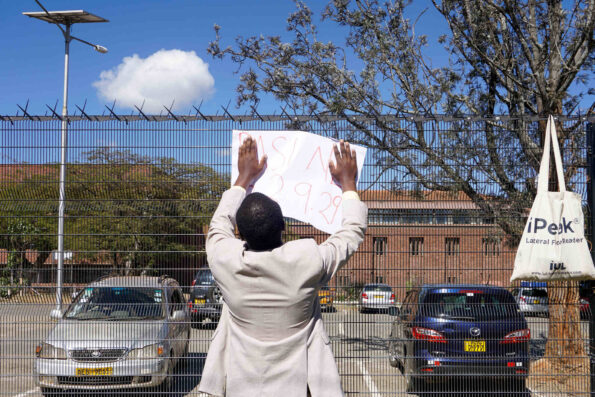
Lucila Pellettieri, GPJ Argentina
Even on days when not all students attend, classrooms are nearly full at Escuela No. 22, in Ezeiza, Buenos Aires. School principal Jordana Rucci says teachers sometimes give lessons from the doorway because they can’t physically fit in the classroom.
BUENOS AIRES, ARGENTINA — On a rainy day in Ezeiza, on the outskirts of the capital city of Buenos Aires, the dirt roads leading to the primary school Escuela No. 22 are slick with mud, and travel is difficult.
“When it rains, fewer kids come,” says Jordana Rucci, principal of the school. Even still, the classrooms are full, and students are packed tight on benches.
That’s kind of a backwards blessing for teachers – classrooms in the school can comfortably fit 30 students, and on days with clear skies, nearly 40 students are here.
Teachers then have to give lessons from the doorway, since they can’t fit in the crowded room.
“There is no way. They can’t enter,” Rucci says.
Meanwhile, also in Ezeiza, the partially constructed school Escuela No. 28 still stands without a roof. A poster outside announces a completion period of 300 days, with a start date of October 1, 2014.



In the province of Buenos Aires, educators say the demand for spots in public school classrooms is constantly increasing. But despite more students than space, school maintenance and construction projects stall. Students jam into packed classrooms or study on patios, and they miss days of school.
The Sindicato Unificado de Trabajadores de la Educación, an education workers’ union, reports that there are at least 15 stalled school construction projects in the suburbs of Buenos Aires. Thirteen other schools lack adequate classrooms and furniture, the union says, or there are serious building problems.
“In the province of Buenos Aires, there is a continuous growth of matriculation, and many schools have paralyzed construction,” says Adriana Grandinoli, the union’s undersecretary of labor health.
The problem keeps getting worse: At the secondary school Escuela. No. 74 in Lomas de Zamora, the Ministerio de Educación de la Provincia de Buenos Aires, the local ministry of education, authorized higher enrollment but did not fulfill its promise to build two new classrooms for this year, says María Susana Ventura, the school’s secretary.
Schools have not received more funding in the past few years.
From 2015 to 2016, the percentage of public spending allocated to education in the province was reduced by 3.8 percent, according to the most recent data from the Ministerio de Educación de la Nación, the national education ministry. In 2016, 58,088,845 Argentine pesos ($1,555,791) was left over in the budget for the Dirección General de Cultura y Educación, the administration that funds schools in the province of Buenos Aires.
Global Press Journal contacted the local ministry of education four times, but it did not grant an interview.
The misfortunes plaguing the province’s schools have hit students hard.
“Sometimes they give us class on the patio or in the dining hall. The chairs move from room to room if there are extras somewhere,” says Melani Alí, a student at Escuela No. 74. “I don’t know if the drains are blocked, but when it rains, it floods, and we can’t come.”
Teachers warn that infrastructure problems hurt children’s learning, and if things don’t change, classrooms will just get more crowded and inefficient.
Silvina Juárez Magallán, a teacher at Escuela No. 22, says it’s complicated to help students learn when teachers can’t physically be next to them.
“Sometimes we can’t even reach the back of the classroom,” Juárez says. “We look for alternatives, like taking a group outside to work, but everything becomes more difficult.”
Rishi Khalsa, GPJ, translated this article from Spanish.







